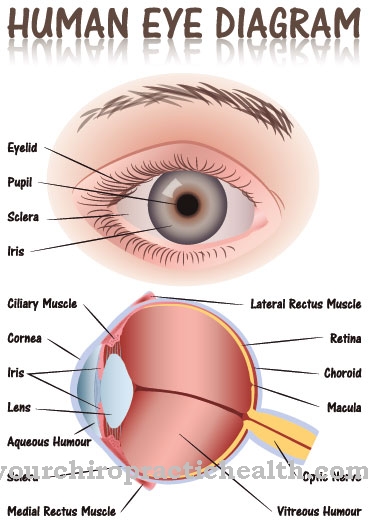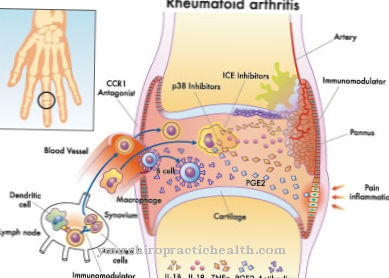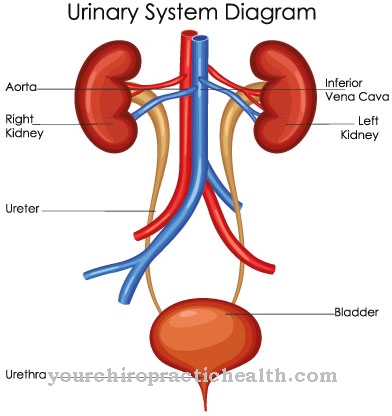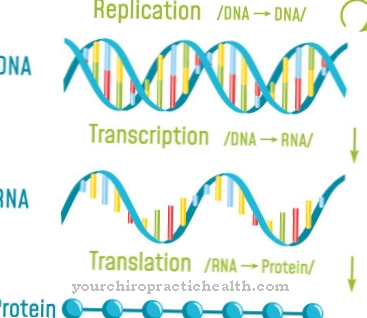A Puberty tarda indicates delayed development in girls or boys through puberty. There can be various reasons for this. Often there is a constitutional delay in development that has already occurred in the parents.
What characterizes puberty tarda?

© Double Brain - stock.adobe.com
Puberty tarda means the delayed onset or slowed development of puberty. Sometimes puberty is completely absent. Both girls and boys can be affected. By definition, puberty tarda is present if puberty has not yet started in girls at the age of 13.5 years and in boys at 14 years of age, if more than five years have elapsed between the onset and Tanner stage P5 G5 or if development has been dormant for more than 18 months within puberty.
According to Tanner, puberty development is divided into individual stages. They define different stages of development of the primary and secondary sexual characteristics. These include the female breast, the female and male genitals and the pubic hair. Puberty tarda has no single cause. Usually the development is made up later. In rarer cases, however, there is an underlying disease.
causes
There are many reasons for puberty tarda. Usually there is constitutional puberty tarda. The development delay here is due to the nature of the system. Often, one or both parents also experienced adolescent developmental delays. The late development is also associated with delayed skeletal maturation. Puberty then proceeds normally, but the height is usually in the lower normal range. The constitutional puberty tarda is not pathological, but only a characteristic of genetic diversity.
Puberty tarda can also be the result of pathological processes. A large number of chronic diseases cause disorders in skeletal growth. These include, for example, Crohn's disease, cystic fibrosis or diabetes mellitus. But malnutrition also leads to delayed puberty. Furthermore, mental illnesses such as depression also have an impact on pubertal development.
Primary functional disorders of the gonads often cause hypogonadism with a reduced production of sex hormones. These can be genetic, such as Ulrich-Turner syndrome in girls or Klinefelter syndrome in boys. Inflammation of the testicles or ovaries also leads to decreased sex hormone synthesis. Secondary functional disorders of the gonads arise from the failure of important releasing hormones that stimulate the formation of sex hormones.
This is a disease of the pituitary gland. Tertiary dysfunction of the gonads is caused by diseases of the hypothalamus. In the absence of receptors for the sex hormone testosterone, the primary and secondary male sexual characteristics do not develop despite normal testosterone concentrations in the body. Despite the male genotype, the affected person has a female phenotype. Puberty does not take place.
Symptoms, ailments & signs
Puberty tarda manifests itself as a delayed onset of puberty or a slowed development of puberty. Sometimes puberty does not happen at all. The menstrual period (menarche) in girls, the growth of pubic hair (pubarche) and breast development (thelarche) start late. Boys experience delays in the growth of the testicles and penis.
Overall, skeletal maturity is delayed. A puberty growth spurt usually does not take place. Therefore, the body size differs from that of young people of the same age. In rare cases the epiphyseal plates close with a delay, resulting in a tall stature. The delayed development of puberty can occasionally cause psychological problems. Depending on the underlying condition, the additional symptoms will vary.
Diagnosis & course of disease
For diagnosis, puberty tarda is documented using the stages of puberty according to Tanner. The anamnesis can distinguish between constitutional and disease-related causes. If puberty tarda occurs more frequently in the family and relatives, it can be assumed that there is a constitutional cause. The laboratory tests determine the androgens, estrogens, the gonadotropins LH and FSH, and the prolactin in the blood.
The determination of the gonadotropins can in turn differentiate between primary and secondary or tertiary gonadal dysfunction. An MRI is used to evaluate intracerebral processes in secondary and tertiary dysfunction. The determination of the maturity of the skeleton and the age of the bones are also part of the diagnosis of delayed puberty development. The development of the internal female genitalia is followed via ultrasound examinations.
Complications
Since puberty tarda is mostly a symptom of an underlying medical condition, it is often accompanied by complications from these disorders. The delayed onset of puberty is usually not the cause of the deterioration in health. This is especially true if chronic diseases such as Crohn's disease, cystic fibrosis, diabetes mellitus, depression or malnutrition are the underlying cause.
But even with endocrine disorders, some of which are congenital or with adenomas of the pituitary gland, as well as inflammation, bleeding and malignant tumors of the central nervous system, serious complications can occur, which are not caused by puberty tarda but by the actual diseases. But even puberty tarda, which is only characterized by a harmless late constitutional development, should urgently be treated with hormones.
Otherwise there will be delayed skeletal maturity. The puberty growth spurt does not occur, so that there are differences in body size compared to the normal population. In some cases, it is even possible that the epiphyseal plates close too late, resulting in extreme tall growth. Furthermore, the delayed onset of puberty can lead to serious psychological problems in some people.
The development of depression to suicide risk or social isolation is possible. Other mental development disorders are also observed. As a rule, hormone therapy should bring good results with late constitutional development. However, if there is androgen receptor resistance in boys, hormone therapy with testosterone cannot initiate puberty either.
When should you go to the doctor?
Puberty tarda must always be treated by a doctor. With this disease there is usually no self-healing and in most cases there is also a significant deterioration in the general condition of the person affected if no treatment is initiated. The earlier puberty tarda is treated, the better the prospects for a positive course of the disease. A doctor should be consulted if the development of puberty is severely delayed. In girls, this can manifest itself through a lack of menstrual bleeding and in boys through significantly delayed growth of the testicles and penis.
Likewise, a tall stature often indicates puberty tarda and should always be treated early. However, since another disease is usually responsible for puberty tarda, the underlying disease must be treated first. As a rule, a pediatrician or a general practitioner can be seen with this disease. However, further treatment is carried out by a specialist.
Treatment & Therapy
Therapy for puberty tarda depends on the underlying disease. If there is constitutional puberty tarda, treatment is usually not necessary because puberty is delayed but occurs on its own. Surgical, radiotherapeutic, or chemotherapeutic measures are used for tumors. Hormone replacement therapy with testosterone in boys and estrogens or gestagens in girls can usually induce puberty quickly.
Boys are usually given intramuscular injections of testosterone in the form of depot preparations from the age of 13. In the case of androgen receptor resistance, however, this treatment is ineffective. Girls can be treated with low-dose estrogen preparations from the age of 12. A combination of estrogens and gestagens is given later.
In some cases, a life-long hormone replacement is necessary to prevent possible deficiency symptoms such as bone loss (osteoporosis). However, hormone therapy should be monitored by experienced endocrinologists in order to avoid side effects such as excessive weight gain, mood swings, physical changes or even the development of cancer.
prevention
There are no known measures to prevent puberty tarda. In most cases, the delay in pubertal development occurs regardless of the lifestyle. In the industrialized countries, malnutrition is no longer the cause. The influence of an improper diet on the development of puberty still has to be investigated.
Aftercare
Follow-up care after successful treatment of puberty tarda depends on the underlying diseases.Since many of those affected do not produce enough sex hormones themselves even after treatment for puberty tarda, it may be necessary to take hormones into old age or at least until the age of the presumed onset of menopause. This is especially important because a lack of sex hormones can reduce fertility and promote the development of serious bone diseases such as osteoporosis.
Regular visits to the doctor with blood samples are necessary to check the hormone levels in the body. If a tumor was the cause of puberty tarda, regular check-ups are necessary even after it has been removed in order to detect the recurrence of a tumor at an early stage. If this has been completely removed, however, no further follow-up is necessary.
If an illness with accompanying massive weight loss, such as anorexia, was the cause of puberty tarda, regular check-ups by the doctor are also necessary in order to identify and counteract any impending weight loss at an early stage. In addition, you should actively work to maintain a normal weight by changing your diet (high in carbohydrates, proteins and fat). The administration of food supplements can also be helpful here. Corresponding long-term therapy should be discussed in detail with the attending physician.
You can do that yourself
If the child shows no signs of the onset of puberty into adolescence, a doctor is recommended. If puberty is tarda, early hormonal treatment can initiate the puberty process and prevent long-term physical and emotional problems. In addition, the condition is often based on an illness that needs to be clarified and treated. A doctor should therefore be consulted if there is any suspicion.
If there are other symptoms, such as malaise or pain, the cause may be a tumor or another disease. Parents should call in a specialist immediately and talk to them about further measures. Targeted self-help is possible by changing the diet and incorporating sport into everyday life. This can regulate the hormonal balance and thereby contribute to the onset of puberty. The parents should also talk a lot with the child concerned and explain the causes of puberty tarda. Support from family and friends is particularly important when puberty is delayed.
When drug treatment is initiated, possible side effects and interactions must be observed. Further self-help measures are usually not necessary, as puberty usually starts independently after extensive drug therapy.












.jpg)



.jpg)










.jpg)
